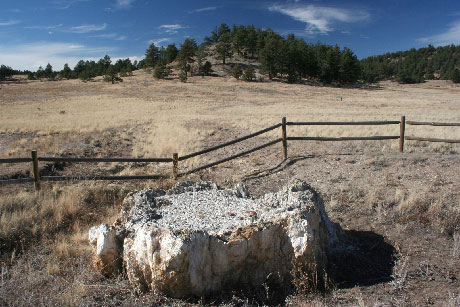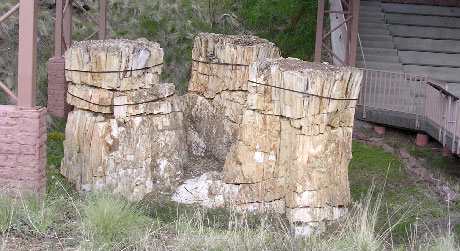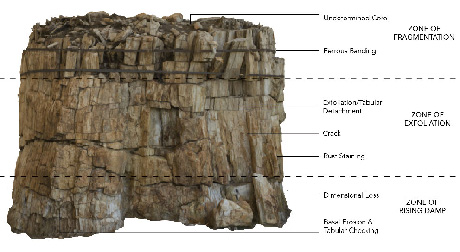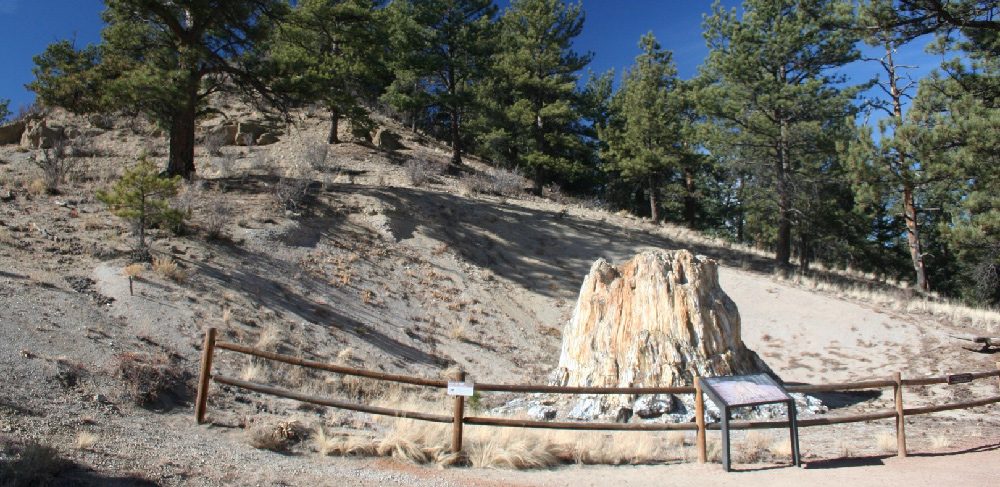The
Architectural
Conservation Laboratory is
actively involved in a unique project
examining the feasibility of
stabilizing large petrified stumps on
the Petrified Forest Loop at
Florissant Fossil Beds National
Monument. In addition efforts are being
made to establish long-term
environmental monitoring at micro/macro
scale to better inform the conservation
and treatment plans.
|
|
|
| Florissant
Fossil
Beds National monument is located in a high
mountain valley
about half a mile south of Florissant, Colorado.
The monument is
located west of Pikes Peak and 35 miles west of
Colorado Springs,
Colorado. The site is 6,278 acres, principally
covering the Florissant
Valley. Florissant’s recently built visitor
complex (2012) houses an
interpretive center and paleontological research
laboratory. Older
buildings nearby provide for the maintenance
staff and serve as an
archive.
The petrified stumps constitute one of the
major natural resources of
the park. This project focuses on developing
site-based methods for the
conservation of petrified trees to benefit
the park’s mission to
conserve its fossil forest. |
|
Of
the nine stumps currently exhibited on the
vistor
trail,
several display deterioration such as cracking,
spalling
and the loss of large fragments of petrified
wood. This project
addresses an urgent need for conservation by
assessment and treatment
evaluation for a heritage resource type that is
under researched.
|
|
 |
All
of the stumps were buried over time and
have only been exposed for the
past several decades. It is highly likely
that the rate of
deterioration of the stumps has increased
significantly as a result of
their exposure, however reburial is not a
viable option.
|
|
While a first stage of research focuses on
experimental remedial
methods of
stabilization and reintegration of detached
material, the overall goal
is to create a stable environment for the
long-term preservation of the
stumps in situ.
Available primary documentation and secondary
literature relevant to
the conservation of petrified wood and
specifically the history of
excavation, preservation, and display at
Florissant was assembled on
site. This
coincided with an assessment of conditions
contributing to
material decay, as well as the compilation of an
illustrated conditions
glossary,
and general stump survey.
|
|
|
| Following
material
characterization and analysis, an experimental
dry
mechanical pinning system using rubber sleeves
and threaded rod, was
tested to address large scale loss
and tabular detachment with minimal
intervention. |
|
 |
Many of the stumps
have been banded with metal strapping in
order to slow down the overall
rate of decay. While the strapping has
proven beneficial, it is
visually disruptive and
may be the cause of other added
conditions.
|
|
Excavation
and in situ presentation of Florissant stumps
over the past 130
years have resulted in their continued
deterioration including
cracking, spalling, and loss that compromises
the integrity of these
important fossil specimens.
|
This
research is supported by the National Park
Service (NPS) through the
Cooperative Ecosystem Studies Unit National
Network (CESU) for the
Colorado Plateau on behalf of Florissant Fossil
Beds National Monument
(alternatively referred to as either FLFO or
Florissant) and the
University of Pennsylvania’s Weitzman School of
Design, Graduate Program in
Historic Preservation and the Center for
Architectural Conservation (CAC).
|
 |
Stumps
generally have three zones consisting of
fragmentation, exfoliation and
rising damp zones. Each of these zones
impact the stump in unique ways
resulting in different conditions.
Conditions which represent effect
can be used to better understand the
causes of deterioration.
|
|
|









